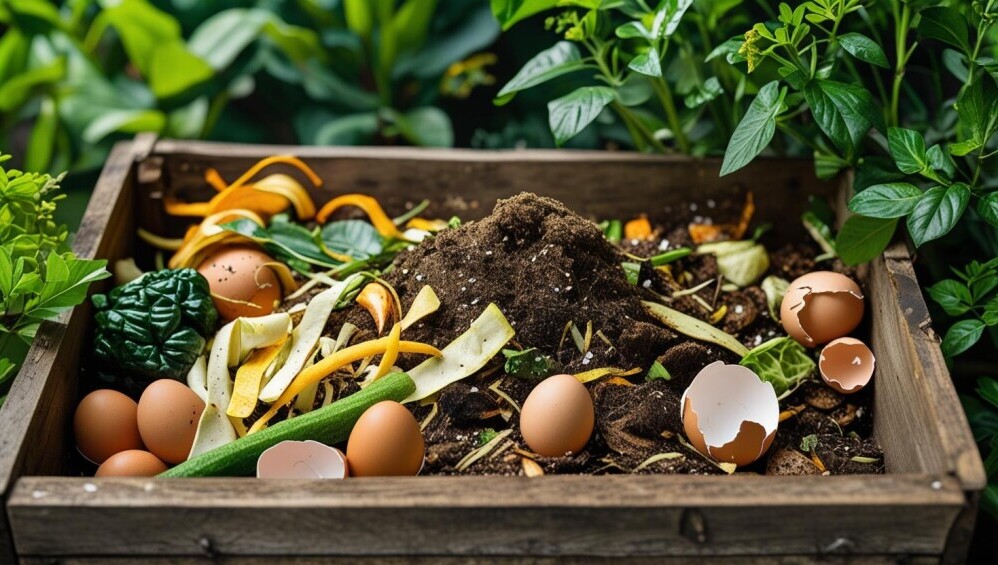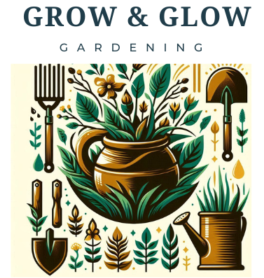 Regenerative gardening is more than a trend—it’s a movement toward sustainability and ecological balance. This approach is about healing the earth, one backyard at a time, by mimicking how nature naturally replenishes itself.
Regenerative gardening is more than a trend—it’s a movement toward sustainability and ecological balance. This approach is about healing the earth, one backyard at a time, by mimicking how nature naturally replenishes itself.
Soil health and biodiversity are crucial in a world where environments are under constant pressure. By adopting regenerative practices, gardeners promote richer soil, improve water retention, and create habitats for beneficial insects and wildlife.
Kitchen scraps might seem like mere leftover waste, but they play a big part in this gardening philosophy. These scraps are rich in nutrients that can revitalize soil and promote plant growth when used effectively. It’s about understanding that every piece of waste has potential, turning your throwaways into garden gold.
Engaging in regenerative gardening means extending kindness to your local ecosystem. By reintroducing organic material back into the soil, you’re supporting nutrient cycles that sustain plant life and animal habitats. It’s a win-win for nature and the food we grow.
Regenerative gardening isn’t just an isolated choice—it’s part of a larger movement towards environmental responsibility. Anyone can make a positive impact, starting with simple changes at home. As more people adopt these practices, local ecosystems thrive, and our world becomes a bit greener.
The Science of Composting: Turning Waste into Wealth
Composting is like nature’s recycling system. It transforms what we often disregard as waste into valuable, nutrient-rich soil. Through a combination of chemical and biological processes, microbes break down organic matter, returning essential nutrients to the earth.
To get started, not all kitchen scraps are created equal. Focus on items rich in nutrients—think fruit peels, coffee grounds, and vegetable clippings. These provide the ‘green’ materials needed for composting, which are high in nitrogen.
Balancing these greens with ‘brown’ materials like dry leaves or newspaper is crucial. Browns add carbon, ensuring that your compost pile doesn’t become a stinky, soggy mess. A good rule of thumb is to aim for a mix of roughly three parts brown to one part green.
Watch out for common pitfalls! Overloading your pile with citrus peels or meat scraps can throw off the balance and attract pests. Stick with plant-based leftovers for best results. Regularly turning your compost helps aerate it, speeding up the decomposition process.
Transforming your household waste into compost is a simple yet powerful step toward regenerative gardening. Embrace the cycle of nature right in your backyard, and watch as your garden flourishes with nature’s richest fertilizer.
Innovative Uses of Kitchen Scraps in the Garden
There’s a whole world of possibilities beyond the compost heap when it comes to making the most of kitchen scraps in your garden. Why not use those old eggshells? With their high calcium content, they make an incredible natural fertilizer, especially for plants like tomatoes that crave a calcium boost.
Coffee grounds are another gem in your kitchen. They’re great for acid-loving plants like blueberries and roses. Just sprinkle the used grounds around your plants or mix them into your compost for an extra nitrogen kick.
Banana peels are rich in potassium, a vital nutrient that promotes root strength and lush flowers. Bury them near the roots of your plants to slowly release their benefits as they decompose.
The water you use to cook veggies isn’t waste either. Let it cool and then pour it onto your plants for an added nutrient boost that they’ll love.
Feeling experimental? Use an avocado pit or a potato eye to grow new plants. These scraps can sprout into whole new plants, offering both fun and function as a mini science project at home.
Embracing these innovative uses for kitchen scraps not only boosts your garden’s health but also reduces household waste. It’s a practical, eco-friendly way to make every bit of your kitchen work harder for you.
Building a Regenerative Community: Sharing and Educating
Creating a thriving garden is rewarding, but sharing that passion with others can amplify the benefits. Hosting a scrap swap or a community composting event can build connections and spread the message of sustainability. People bring what they don’t need and take what they can use, making waste less wasteful.
Workshops are a great way to spark interest in regenerative gardening. Partner up with schools or local community centers to teach others about how simple practices, like reusing kitchen scraps, can lead to larger environmental benefits. It’s hands-on learning that can inspire the next generation of eco-conscious gardeners.
Social media is a modern-day tool for sharing your success stories. Post photos and tips online to showcase how kitchen scraps are transforming your garden. Seeing is believing, and your posts might encourage others to start their regenerative journey.
When people come together to share resources and ideas, it strengthens the community. Gardens become more than just individual spaces; they become part of a network of small green efforts making a big impact. Collaboration helps build resiliency, turning neighborhoods into custodians of their environment.
